What makes me unique? As we go through life soul searching, paving the way for self expression, your customers are also asking the same question about your company. The answer revolves around identity - a set of characteristics defining who we are, what values we stand for, and what we do. And that is why Brand Identity is so important at the time when there are thousands of companies promoting similar products on the Internet. In the article below, we will explain what is Brand Identity, why it is important to express it, and how you can visualize it on your website.
What is Brand Identity?
Brand Identity is a set of visible design elements of a brand that identify and distinguish the company in consumers' minds.[1] It is a way of evoking and cultivating a certain image. Brand Identity differs from the concepts of branding and brand image.
Branding refers to the active marketing efforts of shaping a distinctive image in the minds of the customers.[2]
Brand Identity corresponds to the intent behind the branding through creating foundational characteristics of a company, later used in the marketing efforts (choosing the name, designing the logo, crafting the language etc.).
And lastly, brand image is the actual result of these efforts. The image is determined solely by the customers on the basis on how the brand is perceived in their minds, constructed through various associations related to it and memories about interacting with it.[3]
Through Brand Identity, you can create the building blocks of your company by clearly expressing the values that you stand for. This foundational structure will help you craft an image that can be promoted via marketing strategies in order to create a stable and secure sense of what your company is in the minds of your audiences and customers - critical for developing customer loyalty, customer retention, and a competitive advantage.[4]
Keep in mind that establishing a Brand Identity is a team effort - it requires participation from all kinds of departments, such as the executives in charge of managing an organization, members of the marketing team, and designers as well as developers who work on creating the website and other digital assets.
In this article, we will provide you with the groundwork for understanding and establishing a strong Brand Identity, however what we truly want to focus on is identifying the key design elements that can be implemented on your website to exemplify your Brand Identity - and answer the key question, How to Establish Brand Identity Through Website Design?
Crafting Your Brand Identity
The first step in crafting Brand Identity is to deeply delve into understanding your company. You have to research your audience, value proposition, and competition. HubSpot’s blog post provides a great start into the market research for brand purposes.
The next step vital for designing your Brand Identity is to clearly define your:[5]
-
Mission (Why did you start your business?)
-
Values (What are the beliefs and values that are important to you as a company?)
-
Brand personality (If your brand was a person, what kind of characteristics would it have?)
-
Unique positioning (What makes your company special? How do you differentiate yourself from the competition?)
-
Brand voice (If your brand was a person, how would it communicate?)
These questions should be answered by people who are closely related to the management of your company or who have known it for the longest time, and truly can understand the goals, purpose, and functions of your company - it can be the founder, CEO, the board of directors etc. Although their answers most likely reflect the most authentic characteristics of your brand, they should always be supplemented by the expertise of the marketing and/or communications team to help craft the unique and vibrant image of your brand - it’s just a matter of adding a little dazzle to your branding.
If you are a small business like us, then you are more likely to have close brainstorming sessions with your coworkers - what defines you as a brand. That’s a fantastic way to start as you will receive a range of answers that you might not have expected otherwise. When we began our rebranding process, we used the SB7 Framework developed by Donald Miller as a resource to find inspiration but also direction and balance to clarify the message we want to express to our audience and customers. After answering these questions, we greatly recommend creating the Brand Script to help you establish your brand messaging.
Answering the questions above will help you see a clearer picture of your Brand Identity, which will help you precisely visualize the image and the designs for your brand. If you are a web design and development company providing fast, reliable, and easy to use results (like ClickRay!), you would want to (both subtly and obviously) reflect that on the website through design elements. We will show you what to focus on in the next section.
Developing Your Brand Identity Through Design
First impressions matter. According to a study conducted by Google, it takes about 0.05 seconds for visitors to form an opinion about a website that determines whether they will stay or leave.[6] That is why having a clear, consistent, and appealing website design is greatly valuable to attract customers. But also an outdated website design will turn away prospective customers. As each year, the fashion we wear changes, trends in website design also come and go. That's why it is important to lean into the analysis of current design trends that speak to a wide range of audiences.
At ClickRay, our designers create website layouts based on our client’s Brand Style Guide, which is a document that sets specific guidelines for maintaining brand identity for the website.[7] This way, both parties are assured that the final product will clearly reflect the Brand Identity the company wants to express.
Below, we will focus on the key elements of website design that evoke your Brand Identity (and what to include in your Brand Book):
-
Typography
-
Color Palette
-
Imagery
-
Website Layout
Typography
Typography refers to the font you choose for your branding materials. They are highly evocative on a website because they determine how clear you are communicating to your visitors. With typography, you can draw attention to important messaging, make your content more readable and engage your readers. Different styles can also evoke personality, tone, and pace your message.
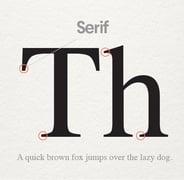
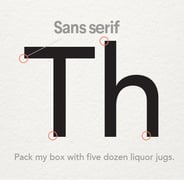

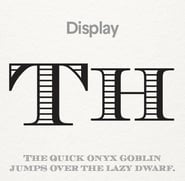
(Source: 99designs)
There are four major types of typography:[8]
-
Serif (e.g., Times New Roman or Garamond) - because of the anchored “feet”, this typography has a classic and traditional look and feel therefore it renders a more old school vibe.
-
Sans Serif (e.g., Helvetica or Franklin Gothic) - contains straight and smooth edges, evoking more sleek and modern feel.
-
Script (e.g., Allura or Pacifico) - imitate cursive handwriting and exemplify that luxurious essence to the words.
-
Display fonts are great for bold statements, because they are more out-of-the box and possess the artistic qualities of design.
You can choose your fonts based on how you want to be perceived - modern or traditional? luxurious or accessible? - When choosing the fonts, keep in mind the font size for the purposes of readability. Another important factor is consistency in design - try to limit the number of font types you are using as a way of expressing stability within your design, which will help your customers feel more secure with the way you are presenting your products and services. 99designs offers a great guide into typographic hierarchy in web design.
Color Palette
Color is an essential instrument for defining brand identity. Studies have shown that color increases brand identification by up to 80% as well as that people make a subconscious judgment about a person, environment, or product within 90 seconds of initial viewing and that between 62% and 90% of that assessment is based on color alone.[9] Color has a serious impact on audience perception, therefore identifying a color that suits your brand best is one of the most important actions taken in defining Brand Identity.[10]
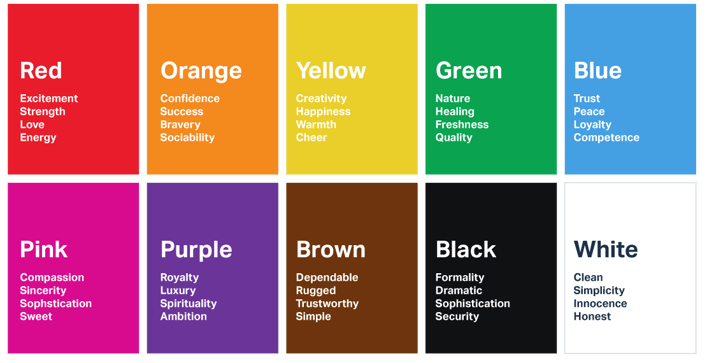
(Source: Usertesting)
There’s not just one color that you have to choose. A well-constructed color palette can change the design from good to great, while a poor choice of colors can lessen users’ overall experience and even intervene with their ability to navigate your website.[11] Colors also can stimulate the emotions of many people, therefore it is vital to first understand what emotions your brand wants to convey.
Imagery
Whether these are icons, graphics or photographs, every image on the website should reflect your brand. So often a good website is let down by images that do not convey the meaning of the brand - for example, an website of an ice cream shop shows kids playing football on a field. How do you want to reflect your brand personality? Traditional and toned-down? Or energetic and colorful?
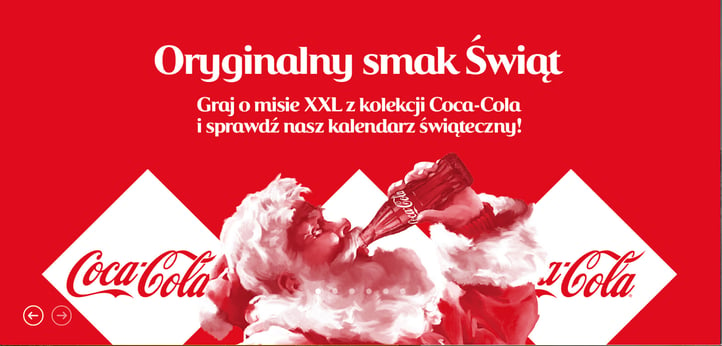
(Source: Coca-Cola Polska)
With photographs, you can set the mood and the stage for your Brand Identity. Great branding images build an internal narrative and external community. They evoke the mission and values your brand stands for with honesty and remind your customers why they purchased your products or services.[12] Remember, your customers are interested in more than just your products - it’s the narrative that you sell along with them. The images are the extensions of your brand story. Try answering the question, “On what journey do I want to take my customers?”
But when choosing images for your website, remember to keep them neat and clean, so that your messaging is easily decipherable. The images should help your visitors navigate through your website rather than make them stop and reflect at a certain point. Lastly, you should always try to ensure that your images are consistent, so that your filters have the same synchrony as the other elements within your Brand Style Guide.[13]
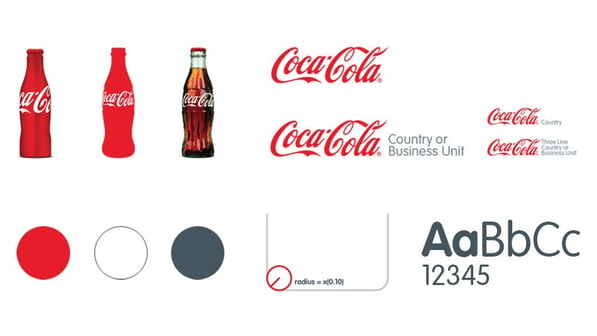
(Source: John L. Nguyen)
If you are planning on (re-)designing your website and do not have a Brand Style Guide yet, do not worry - HubSpot offers a great guide on how to create one. In addition, our designers will work with you to create a Brand Style Guide that is specifically tailored to your Brand Identity to create a website that fits your needs and wants, but most importantly, your brand.
Website Layout
Your website is your most valuable marketing asset because it is the basis for your brand - think of it as your business card. This is where it all comes together - the typography, color palette, and imagery - to create the ultimate touchpoint between your company and your customers.
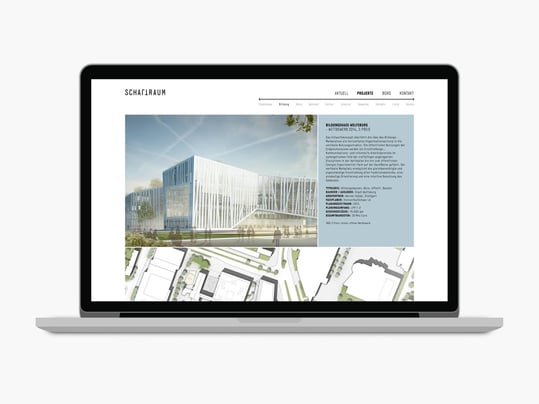
(Source: Philipp Zurmöhle)
Help Users Navigate Through The Website
The website layout should always reflect your Brand Identity and help your visitors navigate through the site so they clearly have a vision of what you are selling and how to reach you. Great UX design will possess a straightforward approach aimed at creating goal-oriented experiences so that users will be able to reach their goals without putting too much effort into figuring out how to go from point A to point Z, meaning imposing straight lines, plain layout, and avoiding unnecessary distractions.[14]
Be Clear and Precise With Your Content
Sometimes less is more. Research shows that websites with low visual complexity and high prototypicality (the degree to which something is typical or exemplary of the category to which it belongs) were perceived as highly appealing.[15] Avoid excessive messaging or visuals and just stick to the ones that tell the story of your brand.
Depending on what your business is and how you want to use your website, you might decide to keep it simple with just your contact information or add more complex third-party integrations, e.g., implement e-commerce capabilities. Our designers and developers work alongside each other to provide you the equipment you need for establishing your Brand Identity through website design (and development, if necessary).
Key Takeaways:
|
Building Brand Identity requires a team of people with specific expertise and sets of skills - the leaders of your company, marketing and communication teams, as well as designers and developers.
The product of Brand Identity is a set of visible design elements through which you can take control of your company’s image in consumers' minds.
Based on these design elements, ClickRay can help you make your visions come to life. |
Don’t be held back by the tech. Our design and development specialists will create beautiful and easy to manage website systems, specifically tailored to your Brand Identity.
Sources:
[1] “Brand Identity,” Investopedia, 28 July 2020 (https://www.investopedia.com/terms/b/brand-identity.asp).
[2] Deanna deBara, “What is brand identity? And how to design and develop a great one,” 99designs, 2017 (https://99designs.com/blog/tips/brand-identity/).
[3] “Brand Image,” Investopedia, 26 March 2015 (https://www.investopedia.com/ask/answers/032615/how-does-brand-image-and-marketing-affect-market-share.asp).
[4] Laura Lake, “9 Steps to Developing a Brand Identity,” The Balance, A Small Business, 10 January 2019 (https://www.thebalancesmb.com/define-your-brand-identity-2294834).
[5] Deanna deBara, “What is brand identity?”, 99designs.
[6] Alexandre N. Tuch, Eva Presslaber et. al., “The role of visual complexity and prototypicality regarding first impression of websites: Working towards understanding aesthetic judgments”, International Journal of Human-Computer Studies, vol. 70(11) (2012), pp. 794-811 (https://research.google/pubs/pub38315/).
[7] Naida Alabata, “Branding essentials: Guide to creating a brand book”, Lucidpress, 8 December 2018 (https://www.lucidpress.com/blog/branding-essentials-guide-to-creating-brand-book).
[8] Deanna deBara, “What is brand identity?”, 99designs.
[9] Jill Morton, “Why Color Matters”, Colorcom, 2019 (https://www.colorcom.com/research/why-color-matters).
[10] “Color meaning and symbolism: How to use the power of color,” Canva (https://www.canva.com/learn/color-meanings-symbolism/).
[11] Hossein Raspberry, “Color Psychology – Brilliant Helping Hand in UX Design”, UXstudio, 20 November 2019 (https://uxstudioteam.com/ux-blog/color-psychology-in-ux-design/).
[12] Meg Reid, “How to select the perfect brand imagery for your business,” 99designs, 2018 (https://99designs.com/blog/tips/brand-imagery/).
[13] “How to build your brand identity,” Canva (https://www.canva.com/learn/brand-identity/).
[14] Anthony Miller, “How Visual Identity Impacts Branding & UX and Why It Matters”, UXPlanet, 19 October 2019 (https://uxplanet.org/how-visual-identity-impacts-branding-ux-and-why-it-matters-9b3162c6b95).
[15] Tuch, et. al., “The role of visual complexity and prototypicality regarding first impression of websites”, International Journal of Human-Computer Studies.




